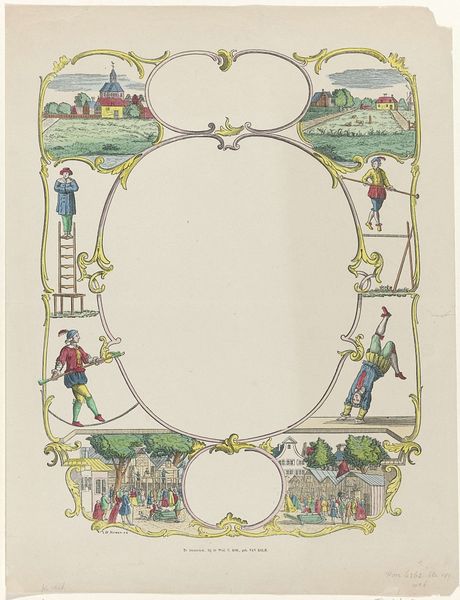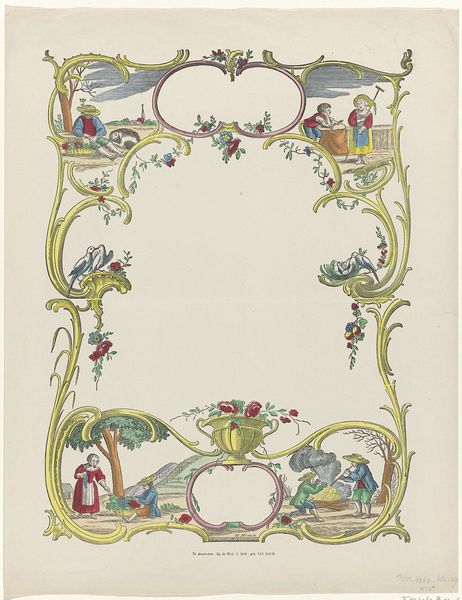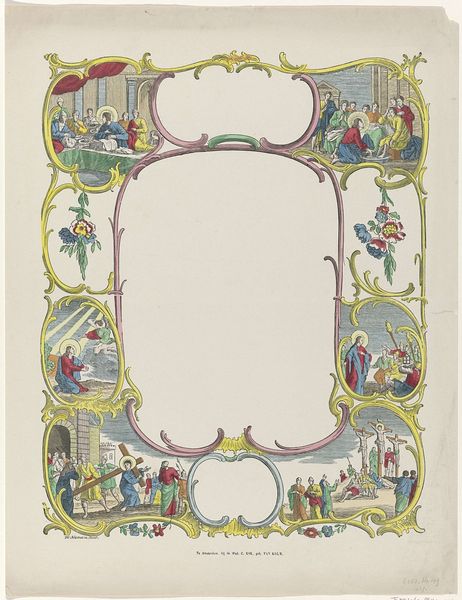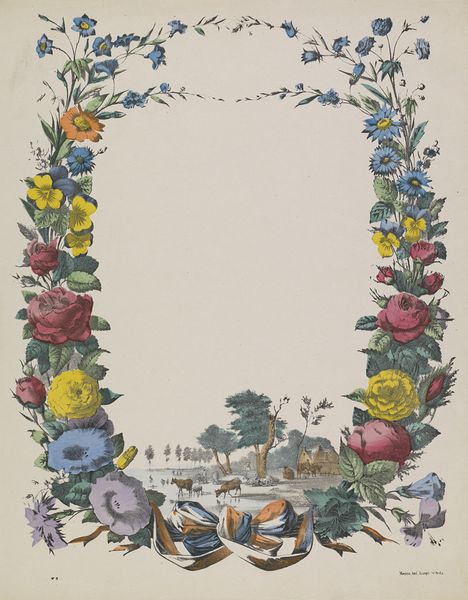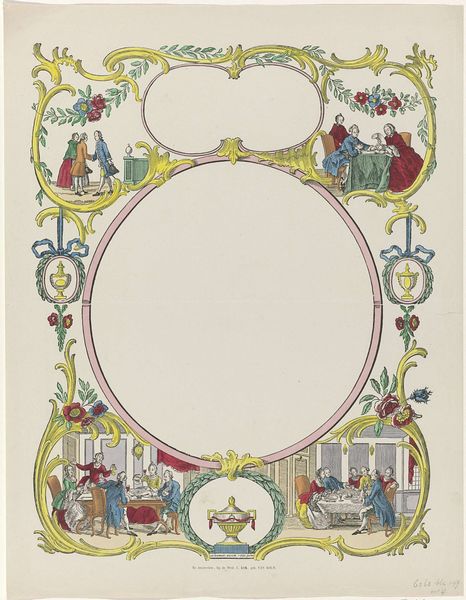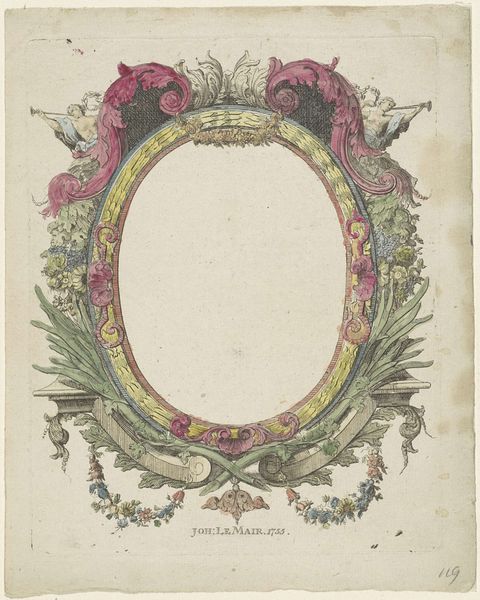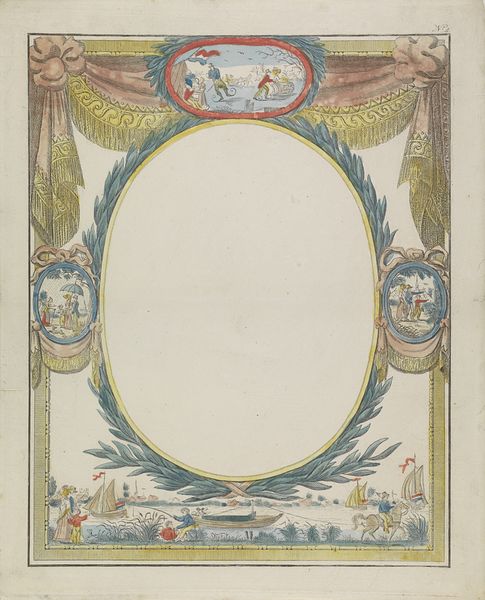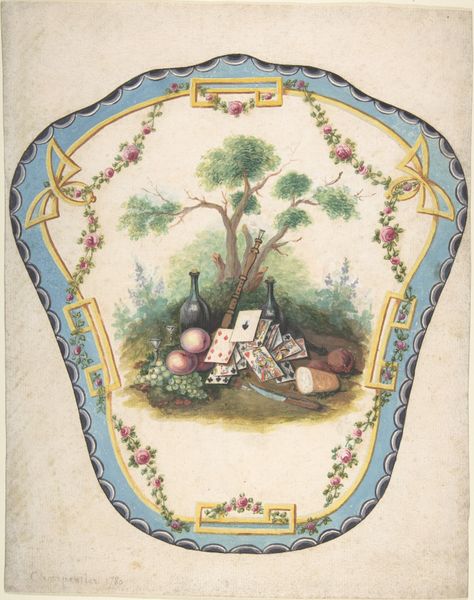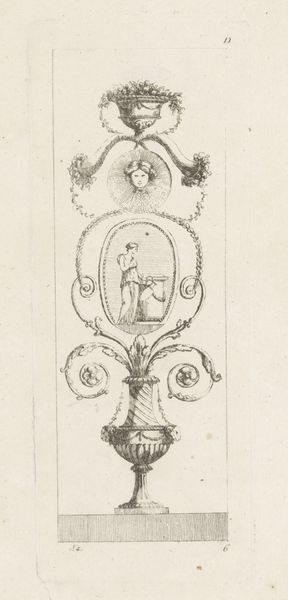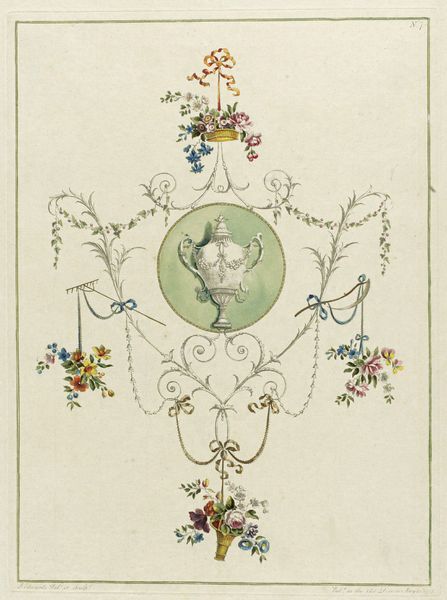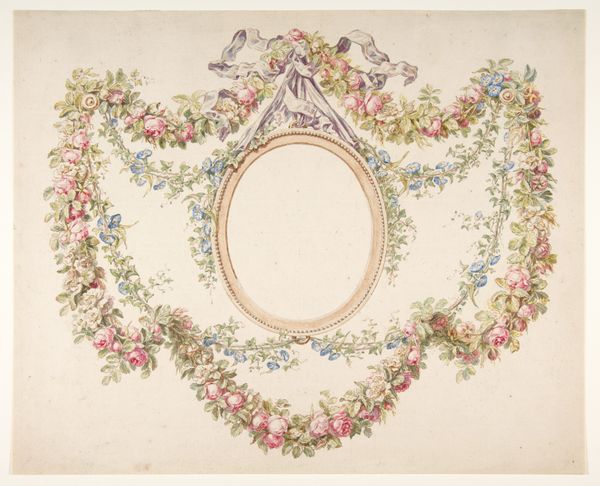
Wensbrief met een etend gezelschap in de buitenlucht en een herder 1738 - 1749
0:00
0:00
drawing, print, watercolor
#
drawing
#
narrative-art
# print
#
landscape
#
watercolor
#
watercolour illustration
#
genre-painting
#
miniature
#
rococo
Dimensions: height 415 mm, width 328 mm, height 402 mm, width 322 mm
Copyright: Rijks Museum: Open Domain
Curator: This watercolor illustration, dating from between 1738 and 1749, is called "Wensbrief met een etend gezelschap in de buitenlucht en een herder" or, "Wish Letter with a Dining Party Outdoors and a Shepherd" created by Jacobus Rijckhoff. It's a very charming example of Rococo aesthetics, don’t you think? Editor: My first impression is that it’s strikingly decorative. There's an almost theatrical quality to it; everyone is placed just so, the landscape meticulously crafted. But it also has an element of artifice that makes me question the reality of the depicted scene. Is it aspirational, or is it meant to be ironic? Curator: Interesting! Rococo was all about lightness, elegance, and a sense of playful artificiality, as a contrast to the serious Baroque style that came before it. The shepherd, the dining party… they are all part of a constructed pastoral ideal. Jacobus Rijckhoff frequently used imagery like this, so do you think that, for him, it spoke to ideas about simple pleasures and escape? Editor: Possibly. But the context is crucial. The Dutch Republic was a society with sharp class divisions, with colonial projects that enabled wealthy individuals to own this “escape.” While beautiful, it speaks volumes about who had the privilege to enjoy leisure. The border around the central cartouche really does seem to tell us more. What is that about? Curator: Right, those architectural follies! Such symbolic gardens had emerged within elite society. Here the Rococo's curvilinear design, a symbolic garden that's both ordered yet seemingly overgrown, serves as a space where social tensions and power dynamics are obscured by beauty. In that blank space, the subject would hand write their feelings. The frame of the page speaks as much as the message inside! Editor: Precisely. It is a letter about privilege. We see a staged, idyllic fantasy, that naturalizes the very unequal social order, reflecting deeply engrained expectations of wealth, power and leisure. But looking at the figures, I notice everyone is white. It reveals what, or rather who, is excluded. Curator: That is where cultural continuity emerges. In so much Rococo artwork, its very focus on beauty has come to shield what sits outside its visual scope. In its way, that void invites us to ask further questions about how symbolic imagery and aesthetics reflect hidden cultural patterns that become entrenched through sheer repetition and avoidance. Editor: Well, it’s certainly given me a new way to consider Rococo art. Curator: And for me too; seeing those patterns and understanding how our art mirrors larger power relations gives me more insight into works of that era.
Comments
No comments
Be the first to comment and join the conversation on the ultimate creative platform.

